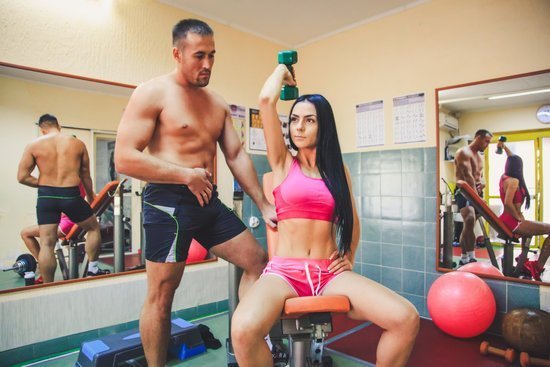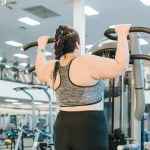Exercise and fitness enthusiasts are always on the lookout for interesting facts and information that can keep them motivated and engaged in their workout routines. In this article, we will explore a variety of exercise and fitness fun facts, along with answering common questions related to staying active and healthy. From the history of exercise to debunking common myths, we’ll delve into the world of fitness to provide you with an informative and entertaining read.
Understanding the history of exercise and fitness can give us insight into how our modern-day workout routines have evolved over time. We will explore how ancient civilizations viewed physical activity and how it has developed into the structured forms of exercise we know today. Additionally, we will highlight the benefits of regular exercise, including its impact on physical health, mental well-being, and overall quality of life.
As we navigate through different types of exercises and fitness activities, we will discuss the importance of nutrition in achieving our fitness goals. From debunking common exercise myths to sharing fun facts about famous athletes and their fitness routines, this article aims to provide readers with a comprehensive overview of all things related to staying active and healthy. So let’s dive into the world of exercise and fitness fun facts.
History of Exercise and Fitness
The history of exercise and fitness dates back thousands of years, with evidence of physical activity being a vital part of human civilization since ancient times. In ancient Greece, the concept of a healthy mind in a healthy body was emphasized by philosophers like Plato and Aristotle, highlighting the importance of both mental and physical well-being. The Greeks also held the first Olympic Games in 776 BC, where athletes showcased their strength and agility through various competitive sports.
During the Middle Ages, physical fitness took a backseat as focus shifted towards survival rather than leisure. However, in the Renaissance period, there was a revival of interest in physical education and fitness. It was during this time that fencing schools were established to teach swordsmanship and combat techniques as a form of exercise.
In more recent history, the Industrial Revolution brought about significant changes in how people lived and worked, leading to a decline in manual labor and an increase in sedentary lifestyles. This shift towards less physically demanding jobs also contributed to the rise of organized sports and recreational activities as ways for people to stay active.
Today, we see a renewed focus on exercise and fitness as essential components of a healthy lifestyle, with gyms, fitness classes, and outdoor recreational spaces readily available for individuals to engage in physical activity.
| Key Points | Details |
|---|---|
| Ancient Greek influence | Ancient Greeks promoted the idea of “a healthy mind in a healthy body” through physical activity. |
| Renaissance period | The Renaissance saw a resurgence in interest in physical education with the establishment of fencing schools. |
| Industrial Revolution impact | The Industrial Revolution led to more sedentary lifestyles but also sparked interest in organized sports for exercise. |
Benefits of Regular Exercise
Regular exercise has numerous benefits for both physical and mental health. From reducing the risk of chronic diseases to improving mood and overall well-being, staying active plays a vital role in maintaining a healthy lifestyle. Here are some key benefits of incorporating regular exercise into your daily routine:
Physical Benefits
Engaging in regular exercise helps improve cardiovascular health by strengthening the heart and enhancing circulation. It also aids in maintaining a healthy weight, reducing the risk of obesity and related conditions such as type 2 diabetes. Additionally, regular physical activity can improve muscle strength and flexibility, leading to better posture and decreased risk of injuries.
Mental Health Benefits
Exercise is not only beneficial for the body but also for the mind. It has been shown to reduce symptoms of anxiety and depression, enhance cognitive function, and boost self-esteem. Physical activity releases endorphins, which are known as “feel-good” hormones that can help alleviate stress and improve overall mental clarity.
Social Benefits
Participating in group exercise classes or team sports can also provide social benefits by fostering connections with others who share similar fitness goals. This sense of community can provide motivation, accountability, and a support system to help individuals stay committed to their exercise routines. Additionally, exercising outdoors or in a scenic environment can increase feelings of well-being and enhance the overall enjoyment of physical activity.
Overall, the benefits of regular exercise extend far beyond just physical fitness. By incorporating different types of physical activities into your routine and making time for proper nutrition, you can enjoy a healthier life both physically and mentally.
Common Exercise Myths Debunked
When it comes to exercise and fitness, there are many myths that can often lead to confusion and misinformation. In this section, we will debunk some of the most common exercise myths to help you better understand the truth behind them.
Myth #1: You Have to Workout for Hours Each Day to See Results
One of the biggest misconceptions about exercise is that you need to spend hours in the gym every day to see any noticeable results. In reality, you can achieve significant benefits from just 30 minutes of moderate exercise per day. Whether it’s going for a brisk walk, doing a quick HIIT workout, or even dancing around your living room, consistency is key when it comes to seeing progress.
Myth #2: Cardio Is the Only Way to Lose Weight
While cardio exercises like running, cycling, and swimming are great for burning calories and improving cardiovascular health, they are not the only way to lose weight. Strength training plays a crucial role in weight loss by boosting metabolism and increasing muscle mass, which in turn helps burn more calories even at rest. Incorporating a mix of both cardio and strength training into your routine can provide optimal results in achieving your fitness goals.
Myth #3: Spot Reduction Exercises Can Target Specific Areas for Fat Loss
Many people believe that doing endless sit-ups or crunches will magically melt away belly fat or that lifting weights will only tone certain areas of the body. Unfortunately, spot reduction is a myth. When you lose weight through exercise, your body determines where it burns fat from based on genetics, not targeted exercises. The best approach for overall fat loss is through a combination of regular exercise, balanced nutrition, and consistency over time.
Different Types of Exercise and Fitness Activities
When it comes to staying active and fit, there are numerous types of exercise and fitness activities to choose from. Whether you prefer high-intensity workouts or more relaxed forms of movement, there is something for everyone. Here are some popular types of exercise and fitness activities that you can incorporate into your routine:
- Cardiovascular exercises: Cardio workouts get your heart rate up and help improve your cardiovascular health. This includes activities like running, cycling, swimming, and dancing.
- Strength training: Building muscle through strength training not only helps increase muscle mass but also boosts your metabolism. Weightlifting, bodyweight exercises, and resistance band workouts are all great options.
- Flexibility and mobility exercises: Stretching and mobility exercises help improve flexibility, range of motion, and prevent injuries. Yoga, Pilates, and foam rolling are great ways to focus on flexibility.
In addition to these common forms of exercise, there are also fun alternatives that can make working out more enjoyable:
- Dance classes: Dancing is a great way to burn calories while having fun. From salsa to hip-hop, there are plenty of dance styles to choose from.
- Outdoor activities: Hiking, rock climbing, kayaking, or even playing a sport like tennis or basketball outdoors can add an element of adventure to your workout routine.
- Group fitness classes: Joining group fitness classes such as spin class, boot camp, or Zumba can provide motivation and social interaction while getting in a good workout.
So whether you prefer the structure of a gym workout or the spontaneity of an outdoor activity, there are endless possibilities when it comes to exercise and fitness activities. Mixing things up can keep your routine interesting and help you stay motivated on your journey towards a healthier lifestyle.
Importance of Nutrition in Fitness
Nutrition plays a crucial role in fitness and overall well-being. It is essential to fuel the body with the right nutrients to support exercise activities and promote optimal performance. A well-balanced diet rich in fruits, vegetables, whole grains, lean proteins, and healthy fats is key to achieving fitness goals. Carbohydrates provide energy for workouts, proteins repair and build muscles, while fats help in nutrient absorption and hormonal balance.
Many people underestimate the significance of hydration in fitness. Staying hydrated is essential for overall health and athletic performance. Water aids in digestion, nutrient transport, temperature regulation, and joint lubrication. Dehydration can lead to decreased exercise performance, muscle cramps, fatigue, and even heat-related illnesses. It is recommended to drink plenty of water before, during, and after exercise to maintain proper hydration levels.
In addition to macronutrients like carbohydrates, proteins, fats, and water, micronutrients such as vitamins and minerals are also vital for supporting various metabolic processes during exercise. For example, vitamin C helps with collagen formation for connective tissues like tendons and ligaments; vitamin D supports calcium absorption for bone health; iron is crucial for oxygen transport in red blood cells; magnesium helps in muscle function; potassium assists with nerve signaling.
A well-rounded nutritional intake ensures that the body functions optimally during physical activity.
| Nutrient | Role |
|---|---|
| Carbohydrates | Provide energy for workouts |
| Proteins | Repair and build muscles |
| Fats | Helps in nutrient absorption and hormonal balance |
Fun Facts About Famous Athletes and Their Fitness Routines
Famous athletes are often seen as role models when it comes to fitness and exercise routines. Many of them have dedicated training regimens that contribute to their peak performance in their respective sports. Let’s take a look at some fun facts about famous athletes and their fitness routines:
- Serena Williams, the legendary tennis player, is known for her intense workout routines. She incorporates a mix of cardio, strength training, and plyometrics to build endurance and power on the court.
- Usain Bolt, the fastest man on Earth, credits his speed to his explosive sprint workouts. He focuses on short bursts of high-intensity sprints to improve his running technique and quickness.
- Michael Phelps, the most decorated Olympian of all time, follows a strict swimming regimen that includes several hours in the pool each day. His dedication to swimming has not only built his cardiovascular fitness but has also helped him maintain a lean physique.
These famous athletes prove that consistent exercise and proper nutrition are key components to achieving success in sports. By understanding their fitness routines, we can learn valuable lessons on discipline, perseverance, and commitment to our own health and well-being.
Exercise and Fitness Q&A
Exercise and fitness are essential components of a healthy lifestyle, but many individuals may have questions or misconceptions about these topics. In this section, we aim to address some common questions related to exercise and fitness to provide clarity and guidance for those looking to improve their physical well-being.
- One common question that arises is: “How often should I exercise?” The American Heart Association recommends at least 150 minutes of moderate-intensity aerobic activity per week, or 75 minutes of vigorous-intensity activity.
This can be spread out over the course of the week, with an aim to exercise for at least 30 minutes on most days. It’s also important to incorporate strength training exercises at least two days a week to work all major muscle groups. - Another frequently asked question is: “What is the best time of day to exercise?” The best time to exercise is ultimately dependent on individual preferences and schedules. Some people may find that they have more energy and motivation in the morning, while others may prefer evening workouts as a way to de-stress after a long day. The key is to find a time that works best for you and fits into your daily routine consistently.
- A common concern that many individuals have is: “I don’t enjoy exercising – how can I make it more fun?” One way to make exercise more enjoyable is by finding activities that you genuinely like doing. Whether it’s dancing, hiking, playing a sport, or taking group fitness classes, there are countless ways to stay active that can cater to different interests and preferences.
Additionally, working out with a friend or listening to music during your workout can help make the experience more enjoyable and motivating. Remember, staying active doesn’t have to feel like a chore – find what brings you joy and makes you feel good while moving your body.
Interactive Exercise and Fitness Quiz for Readers
Are you ready to put your knowledge of exercise and fitness to the test? In this interactive quiz, we will challenge you with a series of questions that cover various aspects of staying active and healthy. From the history of exercise to debunking common myths, this quiz will not only test your current knowledge but also provide you with new insights into the world of fitness.
- What famous ancient civilization is known for their emphasis on physical fitness and exercise?
- Which type of exercise is best for improving cardiovascular health?
- True or False: The more you sweat during a workout, the more calories you burn.
- How many days a week should adults aim to engage in moderate-intensity aerobic activity, according to the CDC?
5. Match the athlete with their respective sport:
- Michael Phelps – A. Basketball
- Serena Williams – B. Swimming
- LeBron James – C. Tennis
These questions are designed to not only challenge your existing knowledge but also encourage you to learn more about how exercise and fitness can positively impact your overall health and well-being. So, grab a pen and paper, or simply keep track of your answers in your head, as we dive into this fun and engaging quiz.
Conclusion
In conclusion, it is evident that exercise and fitness play a crucial role in maintaining a healthy lifestyle. From the history of exercise and fitness to the benefits of regular physical activity, it is clear that staying active is essential for overall well-being. By debunking common exercise myths and exploring different types of physical activities, individuals can find enjoyable ways to incorporate movement into their daily routines.
Moreover, understanding the importance of nutrition in conjunction with exercise is key to achieving optimal results. A balanced diet fuels the body for workouts and aids in muscle recovery post-exercise. Furthermore, learning about fun facts regarding famous athletes and their fitness routines can provide inspiration and motivation for individuals on their own fitness journeys.
Ultimately, through the interactive exercise and fitness quiz provided in this article, readers can test their knowledge and further expand their understanding of the topic. By actively engaging with these questions and answers, individuals can gain valuable insights into how to improve their fitness levels effectively.
In sum, making exercise and fitness a priority is not just about physical appearance but more so about enhancing one’s overall health and quality of life. So remember: staying active is not just an option but a necessity for a vibrant and fulfilled existence.
Frequently Asked Questions
What Are Some Fun Facts About Exercise?
Exercise not only helps in maintaining physical health but also plays a crucial role in mental well-being. It releases endorphins, also known as “happy hormones,” which can improve mood and reduce stress. Additionally, regular exercise can boost cognitive function and improve memory.
Did You Know Facts About Health and Fitness?
Health and fitness facts show how interconnected our physical activity is with overall well-being. For example, engaging in regular exercise can strengthen the immune system, making it easier for the body to fight off infections and diseases. Furthermore, physical activity has been linked to better sleep quality, which is essential for optimal health.
What Are Some Questions About Physical Activity?
When considering physical activity, questions may arise regarding the best type of exercise for specific fitness goals. Some may wonder about the recommended frequency and intensity of workouts for different age groups or fitness levels.
Others might be curious about the potential benefits of incorporating strength training versus cardio exercises into their routine. Overall, understanding how to stay active and healthy involves exploring these various aspects of physical activity.

Passionate about providing useful information to anyone with an interest in the field of Personal Training, I strive to pass on to our readers quality information and to answer any questions about Personal Trainers, the work they do and how to become one.





